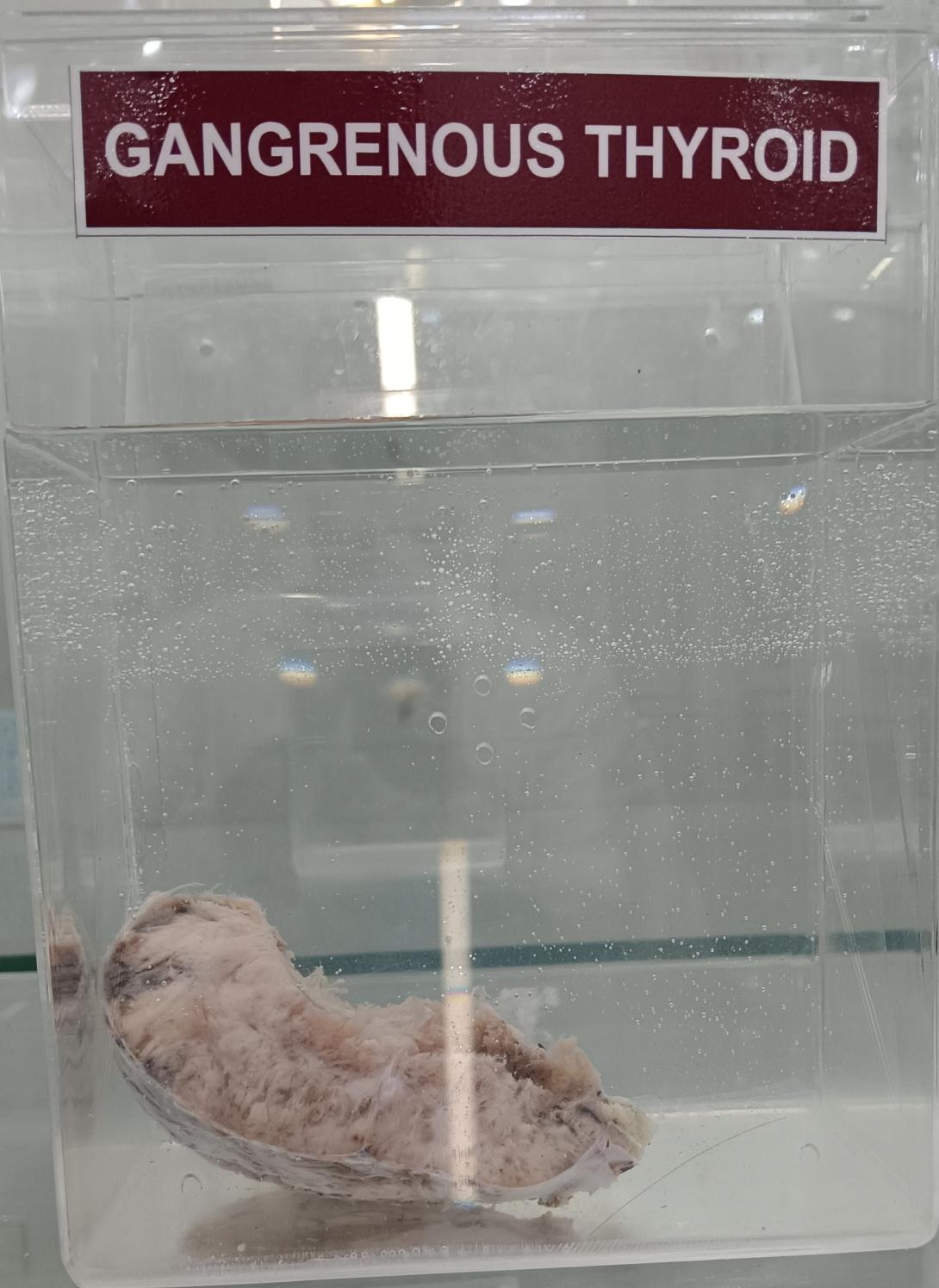Gangrene is a clinical condition of ischemic and necrotic tissue, often circumferential around a digit or extremity. It is identified by discolored or black tissue and associated sloughing of natural tissue planes. The three main types of gangrene are wet gangrene, dry gangrene, and gas gangrene.
Dry gangrene is dehydrated ischemic tissue caused by progressive ischemia distal to arterial occlusion, often a progression of peripheral artery disease. Wet gangrene, which may be dry, complicated by a secondary infection, has associated edema and erythema but no crepitus. Gas gangrene is a specific type of necrotizing infection with edema, crepitus, and gas on radiographs. Necrotizing soft tissue infections overlap with the infectious causes of gangrene and involve necrotic skin lesions that may extend into subcutaneous, fascial, and muscle compartments.[1][2]
The associated tissue loss in gangrene can significantly decrease life quality due to associated pain, limited mobility, and increased risk of hospitalization. These conditions can also progress to substantial morbidity and mortality, with the risk of multiple surgeries and death with the disease progression.
Refer to the following link https://doi.org/10.1016/s0009-9260(66)80136-8

